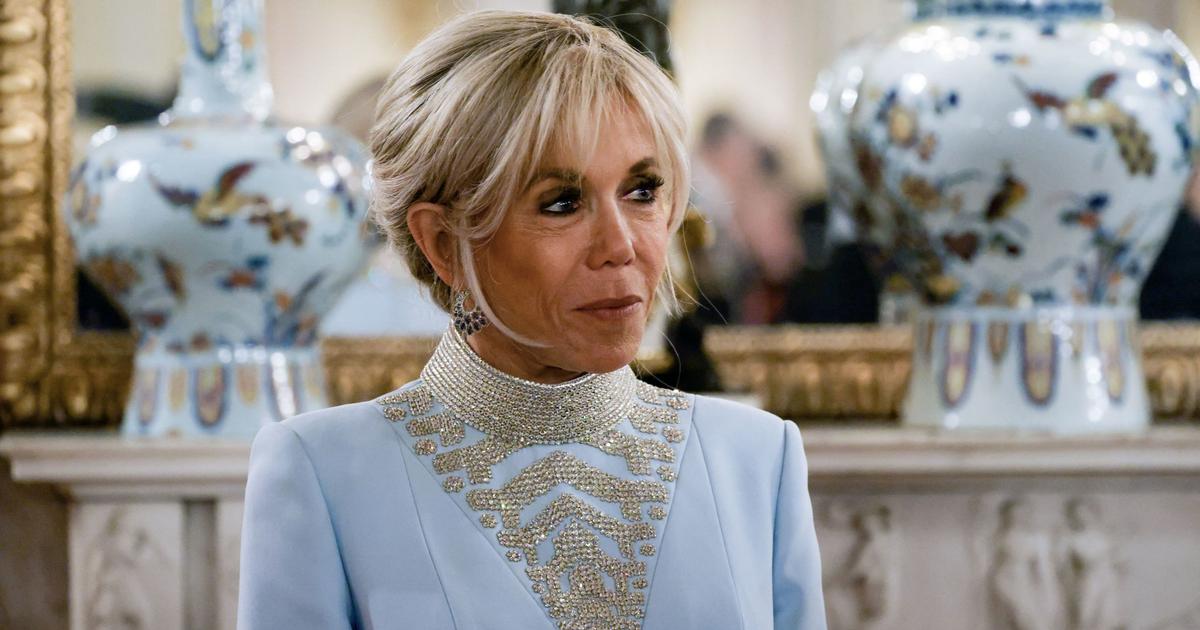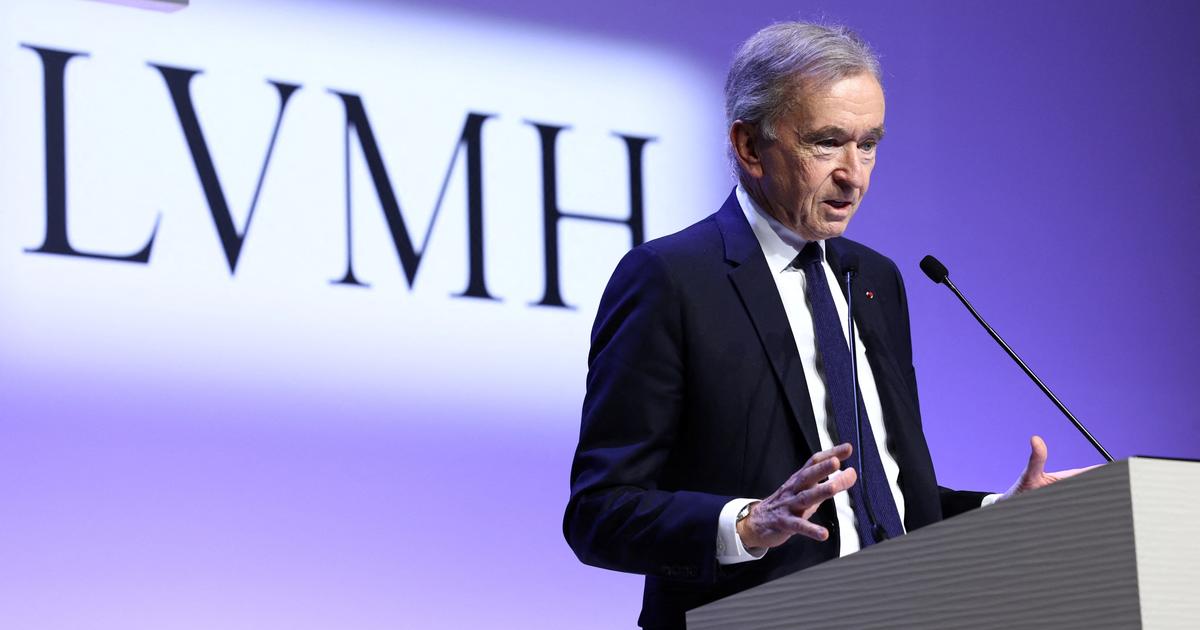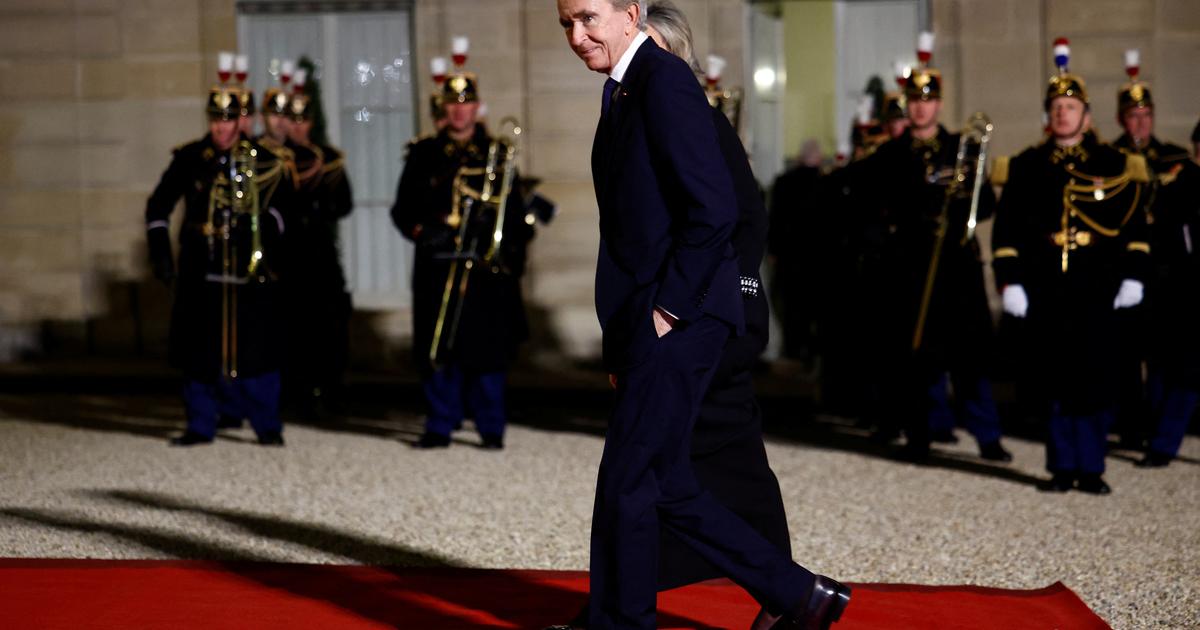LE FIGARO.
- The Louis Vuitton house highlights its founder on the occasion of the 200th anniversary of his birth.
Can we speak of heroisation of the character?
Bernard ARNAULT.
-
In fact, the hero is him.
But, more than heroisation, I would speak of homage, because there is still a great proximity, even today, between what we do and what he initiated at the time: inventiveness. , innovation, this idea of an artisan-trader… I think he was a man of great charisma who knew how to unite his teams, train them, motivate them to follow his ideas.
He had this same power of training with the clients he addressed.
Louis Vuitton was first and foremost a very human person, and his house is deeply imbued with this spirit.
Is it this potential that you already see when you buy the brand at the end of the 1980s?
From the start, I perceived in this house something deeply French, human and universal. Louis Vuitton was both the epitome of quality and a house very close to its customers, with a great sense of products, their evolution, as well as a new approach to distribution through a network of boutiques in own. Vuitton is a completely atypical commercial adventure: it is craftsmanship carried on a planetary scale. And if this brand has conquered the world, it is because it has remained faithful to family values, and not strictly commercial ones: the long term, durability, transmission ... It is no coincidence that French luxury dominates, there is in this country an approach that is both particular and conveying the universal values that prevail in the political fields,philosophical or artistic, of course, but this is also true in industry.
How would you describe the evolution of Louis Vuitton's image?
What makes the image is the reality of the products, essentially: their quality, their durability.
Only then are added the story, the journey, the way in which the shops are arranged, their location, the windows… Originally, Louis Vuitton was a packager.
When I arrived, they made exceptional leather goods, suitcases and trunks.
Today, it has become a global brand.
You can walk around a Vuitton boutique for an entire afternoon as there are so many new products and different trades.
We went from an environment, I wouldn't say “niche”, but very specialized, to a house that has extended its activity to other sectors.
Portrait of Louis Vuitton.
RESTRICTED RIGHTS / Louis Vuitton library
Can we also say that these new sectors of activity - mainly fashion - have made it possible to de-gentrify the brand?
This is the impact of the creators!
From the moment, in the 1990s, when Marc Jacobs was brought in, it was so that he brought his somewhat iconoclastic side to the parades and to certain products.
The result has been a rather unique blend of tradition, extreme quality and great creative daring.
For example, he was the first to have imagined collaborations with artists by entrusting the house monogram to the Japanese Takashi Murakami.
Through this example, it is the illustration of a France, not which is globalizing, but which brings light.
A France that is certainly not the biggest, but the one that shines the most.
It was still very daring ...
Yes, because Louis Vuitton is both a brand of quality and, intrinsically, of innovation, within which we must give the freedom to create. Inventors and designers are like artists: when they are recognized, it is because they have broken the rules. This is what the designers at Louis Vuitton do, they break the codes. Creation must always innovate and surprise, while of course maintaining continuity thanks to historical products. Being a pioneer is one of the characteristics of this house, obviously for creation, but not only.
When I arrived, I appointed Yves Carcelle at the head of the company, entrusting him in particular with the mission of developing this brand in unexpected countries, and he succeeded because he knew how to seize the original values of Vuitton.
I am thinking of Louis himself, who left the Jura on foot to reach Paris, who sent his son Georges to learn English in London and who had the intuition to turn to the world from the 19th century… Yves Carcelle, by accomplishing a pioneering work fused with the spirit of the founder, was the Christopher Columbus of the luxury industry.
Louis Vuitton is a house that embodies the French art of living: classicism on the one hand and, at the same time, extreme modernity.
Bernard Arnault
We would be tempted to draw a parallel with tech companies… But in the French way.
These are two completely different jobs, but we could indeed consider that Louis Vuitton started a start-up: he had this idea, and he carried it out.
The most difficult, of course, is the implementation.
Louis Vuitton is a house that embodies the French art of living: classicism on the one hand and, at the same time, extreme modernity.
This duality, this somewhat explosive mixture, can sometimes be shocking, but France is much more than the land of great wines and cheeses.
Louis Vuitton is France, the creative France, the one that is moving forward.
Naming the foundation "Louis Vuitton", was that for you a way of honoring the man, or the brand?
The two!
It is a wonderful example of creativity, innovation, daring, it is a tribute to Louis Vuitton and the brand he created.
Nowhere could a brand better embody this duality of innovation.
Around Louis Vuitton, you have built a group on a double dynamic: widening the potential of brands and widening the portfolio of brands.
LVMH is today the leading luxury group in the world.
However, this idea has long been criticized ...
In line with Louis Vuitton's career, I have always been keen to galvanize my teams through my group. At the time when, thanks to various opportunities, I conceived the idea of creating the first luxury group in the world, I was very criticized: it was rather time to separate the houses. But I have always believed in this design that inspired me, and I think the result speaks for itself. Finally, what we are trying to do at the group level is what Louis Vuitton has implemented in an extraordinary way at the scale of its house: to develop a company around trades, high quality, luxury, creativity.
It is a commercial conquest closely linked to the cultural influence that it generates.
When its current president, Michael Burke, opens a boutique in Seoul with Frank Gehry or organizes a parade in Shanghai, even before doing so in Paris due to the pandemic, it is a cultural event.
The same is true when he celebrates the founder's bicentenary by calling on 200 artists to present their work in the windows of 500 shops around the world… This approach, which cannot dissociate culture from commerce, is at the heart of Louis' success. Vuitton.
Real customers, those who want to be loyal to us, need authenticity
Bernard Arnault
Do you think that luxury will continue to develop on these same dynamics?
What we are experiencing on the economic level is due to the extraordinary growth of the world since the 1980s: growth in purchasing power in the United States, in Japan, arrival of countries with strong development, such as China… Without It is doubtful that we can imagine jolts with periodic crises, but the fundamental economic engine is still there for the next few years.
On the luxury itself, on the products, the most important is authenticity.
I believe that we must be very careful not to seek economic performance at all costs, which is now a little easier in the light of the digital world.
But real customers, those who want to be loyal to us, need authenticity, and we must be very careful to distinguish ourselves from products that do not have it.
Vuitton in
Le Figaro
By delving into the
Figaro
archives
, we find articles on Vuitton trunks and luggage which are more than a century old.
We already praise their solidity, their practicality, the know-how implemented… Characteristics on which the house was built.
It is also interesting to note that, on several occasions, the reference to American success comes to give a guarantee to the company.
No one is a prophet in his country, perhaps.
Many fashion houses will then be able to testify to this.
1901
PVDE / © PVDE / Bridgeman images
June 21, 1904
October 4, 1904
July 2, 1926
June 17, 1927






/cloudfront-eu-central-1.images.arcpublishing.com/prisa/HUQRVUYDQVBNVAEHMCGNYB5QNU.jpg)








